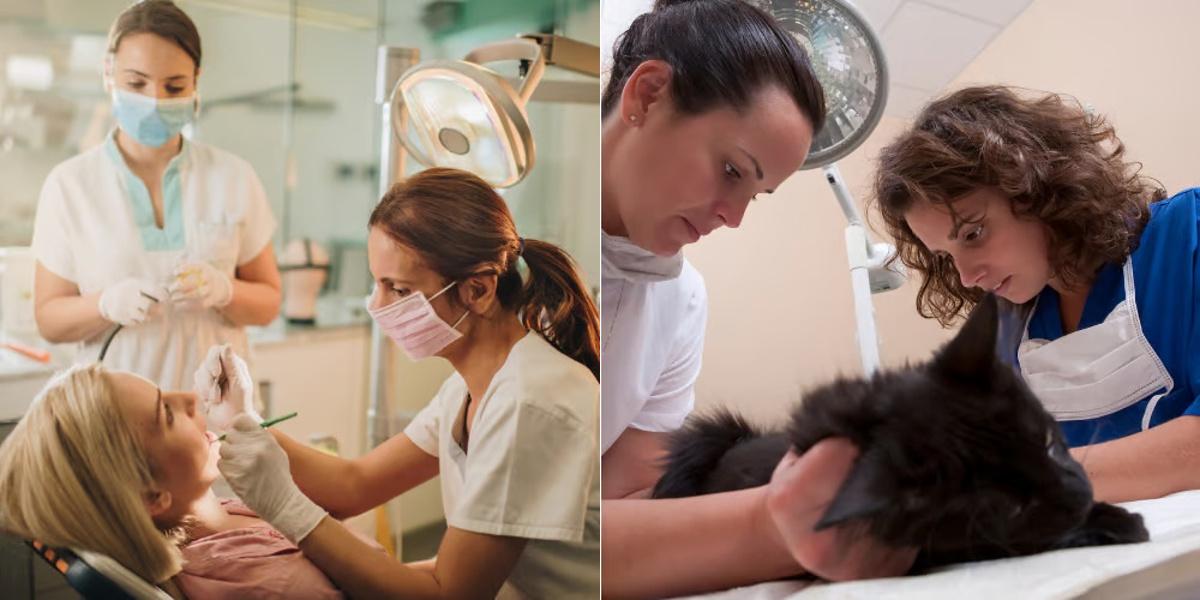Dental Assistant vs Veterinary Assistant

Key Points:
- Dental Assistants help dentists with patient care; Veterinary Assistants support veterinarians in caring for animals.
- Dental Assistants typically earn higher salaries than Veterinary Assistants.
- Both jobs are in demand, but Dental Assistant positions may be more plentiful in some areas.
- Dental Assistant training is often completed through in-person programs, while Veterinary Assistant training can be done online or in-person.
- Dental Assistant training is generally more expensive and takes longer than Veterinary Assistant training.
As a workforce development specialist, I often work with students who are interested in pursuing a vocational career. Two popular career choices in this field are dental assisting and veterinary assisting. While both professions involve providing support to healthcare professionals, there are some key differences between the two. In this blog post, we will explore the roles and responsibilities of dental assistants and veterinary assistants, as well as the education and training required for each career. We will also discuss the career outlook and salary expectations for both professions. So, if you're considering a career as a dental assistant or veterinary assistant, read on to find out which path may be the best fit for you.
Dental Assistant vs Veterinary Assistant: Career Outlook and Salary
Dental Assistant: The career outlook for dental assistants is promising, with a projected job growth rate of 7 percent from 2019 to 2029, according to the Bureau of Labor Statistics (BLS). This growth is due to an increasing demand for dental services, as well as a growing emphasis on preventative dental care. The median annual wage for dental assistants was $40,080 in May 2020, with the highest 10 percent earning more than $56,930.
Veterinary Assistant: The career outlook for veterinary assistants is also positive, with a projected job growth rate of 16 percent from 2019 to 2029, according to the BLS. This growth is largely driven by an increasing pet population and the rising demand for veterinary services. The median annual wage for veterinary assistants was $28,590 in May 2020, with the highest 10 percent earning more than $40,840.
Final Thoughts
Choosing between a career as a dental assistant or veterinary assistant ultimately depends on your interests and career goals. Both professions offer rewarding opportunities to work in healthcare and make a difference in the lives of others. Dental assisting may be a good fit if you enjoy working with people and have an interest in oral health, while veterinary assisting may be a better choice if you have a passion for animals and want to contribute to their wellbeing. Consider your strengths, interests, and the specific requirements of each profession before making your decision.
Ensuring accessibility for individuals seeking growth, Dreambound strategically places its educational programs in various locations. Delve into a more comprehensive understanding of the exciting opportunities within these two vocations by visiting:

Stephanie Dayak is the go-to person for everything related to automation and integrations at Dreambound. As a Certified Tax Technician turned tech whiz, her sharp eye for detail and passion for efficiency become evident in every project she undertakes. When not solving tech puzzles, she's out exploring the local food scene, cozying up with her dogs, or plugged into a thought-provoking podcast. She's an ardent believer in mixing fun with functionality!




